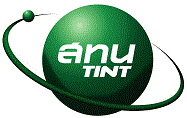BA06: ผลของแร่องค์ประกอบต่อการวิเคราะห์สัญญาณเทอร์โมลูมิเนสเซนซ์ของกระเทียมฉายรังสี
* อาทิตยา สุขเกษม 1 วันวิสา สุดประเสริฐ 1 และนายอารักษ์ วิทิตธีรานนท์ 2
1 ภาควิชารังสีประยุกต์และไอโซโทป คณะวิทยาศาสตร์ มหาวิทยาลัยเกษตรศาสตร์
50 ถนนพหลโยธิน แขวงลาดยาว เขตจตุจักร กทม. 10900, E-Mail: atitaya_788@hotmail.com
2 สำนักสนับสนุนการกำกับดูแลความปลอดภัยจากพลังงานปรมาณู สำนักงานปรมาณูเพื่อสันติ
16 ถนนวิภาวดีรังสิต แขวงลาดยาว เขตจตุจักร กรุงเทพมหานคร 10900
โทรศัพท์ 0 25 62 0096 โทรสาร 0 2562 0093 E-Mail: arag@oaep.go.th
บทคัดย่อ
เทคนิคเทอร์โมลูมิเนสเซนซ์ (TL) เป็นเทคนิคหนึ่งที่นิยมใช้ตรวจพิสูจน์อาหารฉายรังสี ประเภทเครื่องเทศ สมุนไพร และผลไม้แห้ง ตามมาตรฐานโคเด็กซ์ อาศัยหลักการตรวจวัดสัญญาณ TL ของแร่ที่เป็นองค์ประกอบ หรือปนเปื้อนอยู่ใน อาหาร งานวิจัยนี้มีวัตถุประสงค์เพื่อศึกษาผลของแร่องค์ประกอบต่อความเข้มของสัญญาณ TL โดยสกัดแยกแร่องค์ประกอบ จากตัวอย่างกระเทียมผง 3 ชนิดทั้งที่ผ่านการฉายรังสีแกมมาและไม่ได้ผ่านการฉายรังสี ด้วยสารละลายโซเดียมโพลีทังสเตท ตรวจสอบชนิดและปริมาณแร่องค์ประกอบด้วยเทคนิคการเลี้ยวเบนรังสีเอกซ์ (XRD) วิเคราะห์ความเข้มของสัญญาณ TL จากแร่ที่สกัดได้ด้วยเครื่องอ่านสัญญาณ TL รุ่น Harshaw 4500 ผลการทดลองพบว่า ตัวอย่างกระเทียมผงทั้ง 3 ชนิด มีควอตซ์ (SiO 2) เป็นแร่องค์ประกอบหลักในปริมาณที่แตกต่างกันขึ้นกับชนิดของตัวอย่าง โดยความเข้มของสัญญาณ TL มีค่าเพิ่มขึ้นตามน้ำหนักควอตซ์ที่เพิ่มขึ้น สรุปได้ว่าปริมาณแร่องค์ประกอบที่มีในตัวอย่างกระเทียมผงมีผลต่อความเข้มของ สัญญาณ TL ซึ่งอาจส่งผลต่อการตรวจพิสูจน์กระเทียมฉายรังสีด้วยเทคนิคเทอร์โมลูมิเนสเซนซ์
คำสำคัญ : กระเทียมฉายรังสี การเลี้ยวเบนรังสีเอกซ์ เทอร์โมลูมิเนสเซนซ์ แร่องค์ประกอบ
BA06: Effect of Mineral Composition on Thermoluminescence Analysis of Irradiated Garlics
*Atitaya Sookkasem 1 Wanwisa Sudprasert 1 and Arag Vitittheeranon 2
1 Department of Applied Radiation and Isotopes, Faculty of Science, Kasetsart University, Bangkok 10900,
E-Mail: atitaya_788@hotmail.com
2 Bureau of Technical Support for Safety Regulation, Office of Atoms for Peace
Chatuchak, Bangkok 10900, E-Mail: arag@oaep.go.th
Abstract
Thermoluminescence (TL) is one of the most popular techniques used for identification of irradiated foods such as spices, herbs and dried fruits in accordance with the Codex Standards. TL analysis is based on the determination of TL of adhering or contaminating minerals in foods. This research aimed to study the effect of mineral composition on the TL intensity. The composited minerals were extracted from 3 types of non-irradiated and irradiated garlic powders by sodium polytungstate solution. X-ray diffraction (XRD) spectroscopy was employed to investigate the type and amount of minerals present in garlic powders. TL of separated minerals were analysed using a Harshaw 4500 TL reader. The results showed that the mineral composition of garlic powders was mainly quartz of varying amounts depending on the types of garlics. The TL intensity linearly increased with the amount of quartz present in the samples. It can be concluded that the amount of minerals affects the TL intensity which might influence the identification of irradiation treatment of garlics by thermoluminescence.
Keywords: irradiated garlics, thermoluminescence, X-ray diffraction (XRD), mineral composition |


